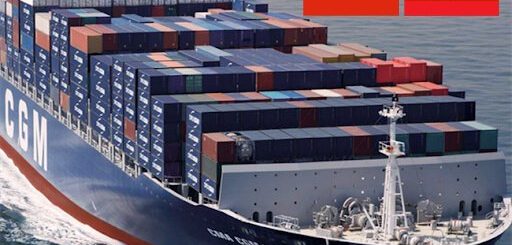Optimize FBA Storage Costs from China to the Americas: Smart Strategies for 2025
Introduction
In 2025, Amazon FBA storage fees continue to rise, particularly affecting sellers shipping from China to the U.S. or Canada. This detailed guide breaks down the fee structure—monthly, long-term, and storage utilization surcharges—and provides actionable strategies to minimize warehousing expenses, leveraging Amazon tools like AWD and auto-replenishment to protect your margins.
1. Overview of FBA Storage Fees in 2025
Monthly Storage Fees
Amazon charges storage fees based on the average daily inventory volume in cubic feet (U.S.) or cubic meters (Canada):
- Standard‑size products (Jan–Sep): ~$0.78/ft³ per month. Reduced from $0.87 to help balance new surcharges.([turn0search14]turn0search10])
- Oversize items (Jan–Sep): ~$0.56/ft³
- Peak season (Oct–Dec): Standard size rises to $2.40/ft³, oversize to $1.40/ft³.([turn0search10]turn0search6])
Canada converts these to CAD per m³ (~$30–34 CAD/m³ off‑peak, up to $13 CAD/m³ more in peak).([turn0search10]turn0search2])
Long‑Term Storage Fees & Aged Inventory Surcharge
Inventory stored more than 181 days (about six months) incurs additional charges:
- $1.50/ft³ for 181–270 days
- ~$3.80/ft³ for 271–365 days
- After 365 days, FBA charges $6.90/ft³ or $0.15 per unit, whichever is higher.([turn0search16]turn0search12])
In Canada, aging thresholds and fees are analogous; penalties begin at 271+ days.
Storage Utilization Surcharge
Starting April 2024, sellers with inventory covering more than ~22 weeks of forecasted demand incur surcharges (scaled across utilization bands). This new granularity penalizes overstocking sooner than before (22 vs. 26 weeks). Surcharges can reach $1.58–$1.88/ft³ for extreme overstock.([turn0search14]turn0search12])
2. How These Costs Impact China‑to‑U.S./Canada Sellers
- High storage volume from bulk imports raises utilization ratio and risk constant surcharges.
- Peak season impact: If your inventory sits over Q4, costs triple—e.g., a 10 ft³ standard-size product costs $24/month vs $7.80/month off-peak.
- Aged inventory fees can erode profit fast—$69 monthly for only 10 ft³ over one year—a severe loss for slow-movers.
3. Storage Optimization Strategies
1. Precise Inventory Management
- Demand forecasting: Use sales data and seasonality to avoid over-importing.
- Age tracking: Use Inventory Age report to flag items approaching 180 and 365-day thresholds.
- Regular audits: Remove or discount items before long-term fees activate.([turn0search12]turn0search16])
2. Leverage Amazon Tools
- Inventory Performance Index (IPI): Maintain a high IPI to unlock storage capacity and minimize utilization fees.([turn0search2]turn0search14])
- Low‑Inventory‑Level Fee Avoidance: Keep adequate stock to avoid new penalties against understocking.([turn0search14])
3. Use FBA Liquidations or Removal
- Liquidate slow-moving stock through Amazon Outlet or removal orders to avoid long-term fees. Prioritize items that won’t sell within six months.([turn0search12]turn0search2])
4. Optimize Packaging & Bundling
- Redesign packaging to reduce cube
- Bundle slow-selling items with fast-moving SKUs to increase turnover per cubic foot
4. Amazon Warehousing & Distribution (AWD): A Game Changer
From early 2025, AWD offers bulk upstream storage with automatic replenishment to FBA—and deeper savings.([turn0search7]turn0search3])
AWD Key Benefits
- Lower storage rate: $0.43–$0.48/ft³/month (base or smart storage), ~20% cheaper than standard FBA.([turn0search1]turn0search7])
- No peak-season surcharge: AWD storage fees do not spike in Q4.
- Auto-replenishment: AWD can automatically push stock to FBA before depletion—preventing stockouts without tying up your cash.
- No inbound placement fee: If using Amazon’s Partnered Carrier Program (PCP) or AGL, this is waived.([turn0search1]turn0search11])
AWD Caveats
- Higher outbound fulfillment costs per item
- Limited to bulk storage—not ideal for ultra fast-moving goods
- From October 2025, AWD storage fees rise to $2.40/ft³ in Q4—mirroring FBA.([turn0search17])
5. Strategy Matrix: Choose the Right Storage Mix
| Strategy | Best For | Why It Works |
|---|---|---|
| FBA only | Fast-selling, low-age products | Lower per-unit fulfillment costs |
| AWD + Auto-Replenishment | Bulk, seasonal inventory | Lower storage + flexible FBA filling |
| Removal/liquidation | Slow-moving aged inventory | Avoid steep long-term charges |
| Packaging/bundles | Items with low turnover | Reduce storage footprint and fees |
6. Sample Scenario: China‑to‑U.S. Electronics Seller
- Imports 200 ft³ annually
- If in FBA only—and reaching overstock age—the seller pays ~$2,400/month in Q4, plus $1,380 long-term surcharge if 10 ft³ exceeds 365 days.
- Transitioning older stock into AWD for bulk storage saves 20% and avoids peak surcharges. Replenishment keeps FBA stocked without excess.
- Liquidating unsold SKUs monthly prevents aged fees buildup.
7. Additional Practical Tips
- Use removal orders before the 15th of the month to prevent aged fee charges.([turn0search12]turn0search16])
- Monitor Storage Utilization ratio daily, and keep inventory coverage below ~22 weeks to avoid surcharges.
- Enroll new ASINs under New Selection to receive exemption benefits (first 180–365 days).
- Run promotions or advertising to accelerate turnover before aging periods.
8. Tools & Resources to Support You
- Inventory Age Report, IPI Dashboard, and Fee Preview tools in Seller Central
- Use FBA Fee Preview and Revenue Calculator tools to model costs and profitability.([turn0search8]turn0search0])
9. Summary
For sellers importing from China into U.S. or Canada FBA, rising storage costs threaten profitability. Understanding monthly storage, long‑term fees, and utilization surcharges is key. Using solutions like AWD, auto‑replenishment, precise forecasting, packaging optimization, and liquidation strategies can dramatically cut your warehousing spend and maintain healthy cash flow in 2025.


